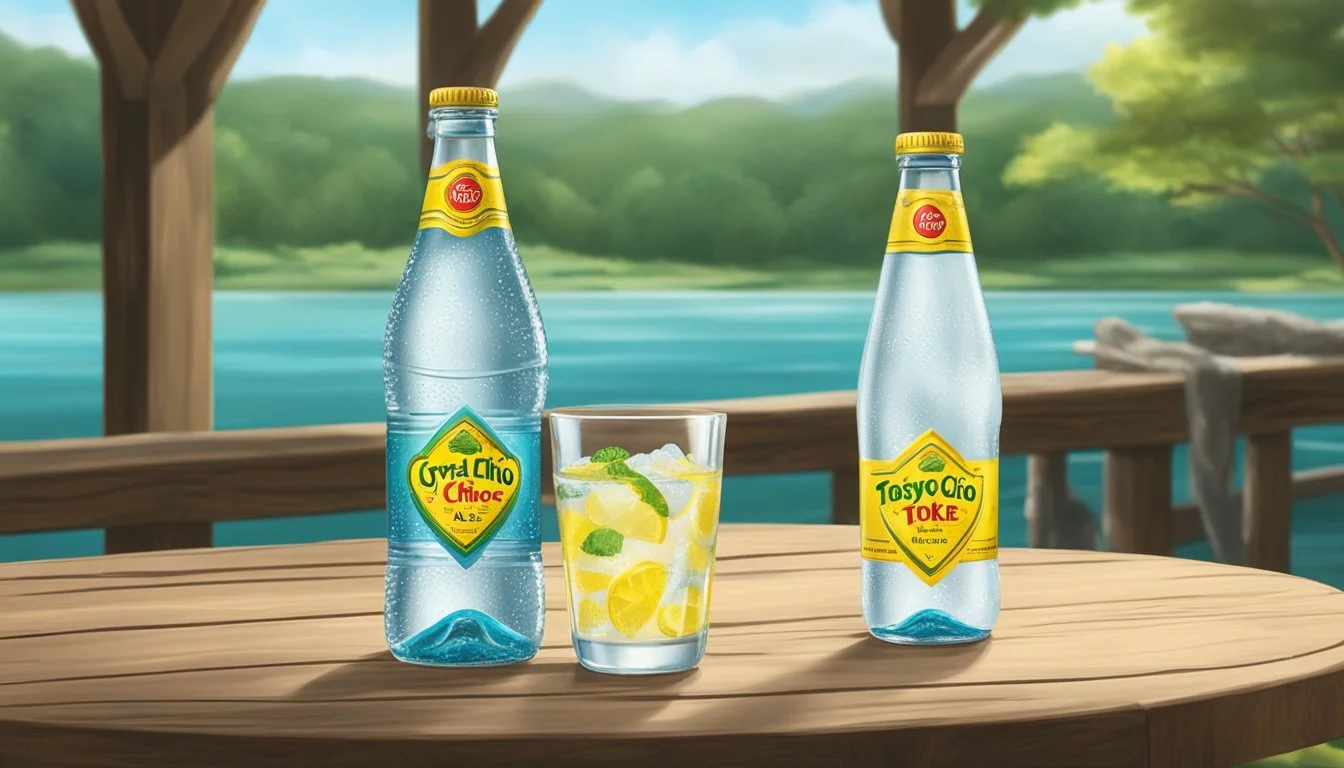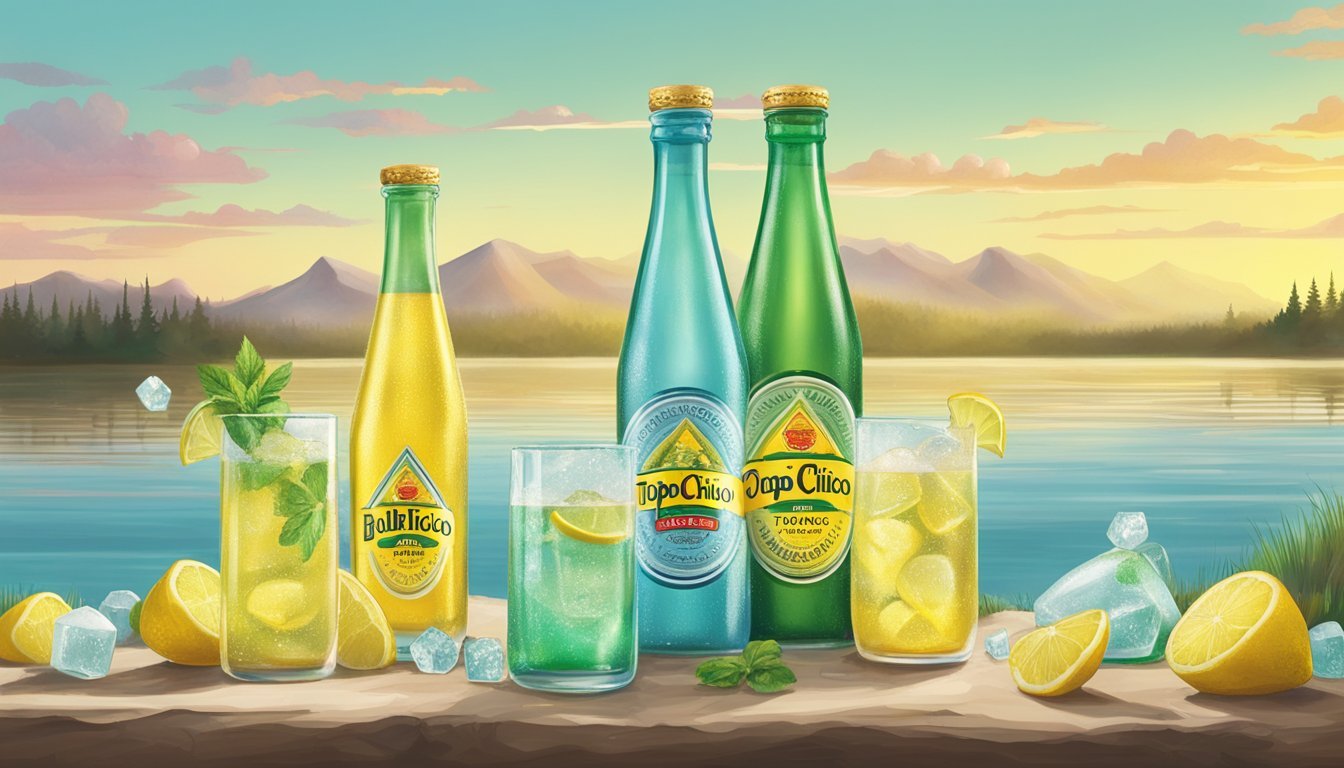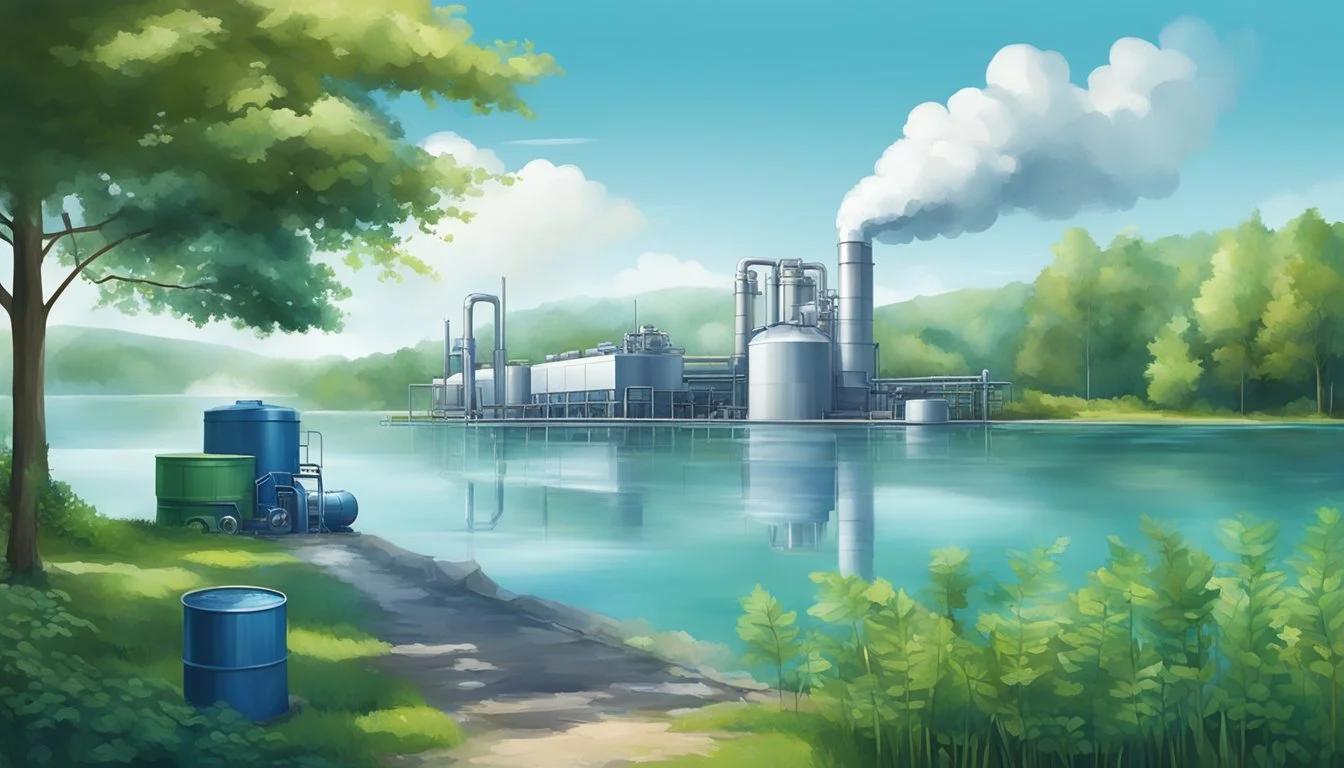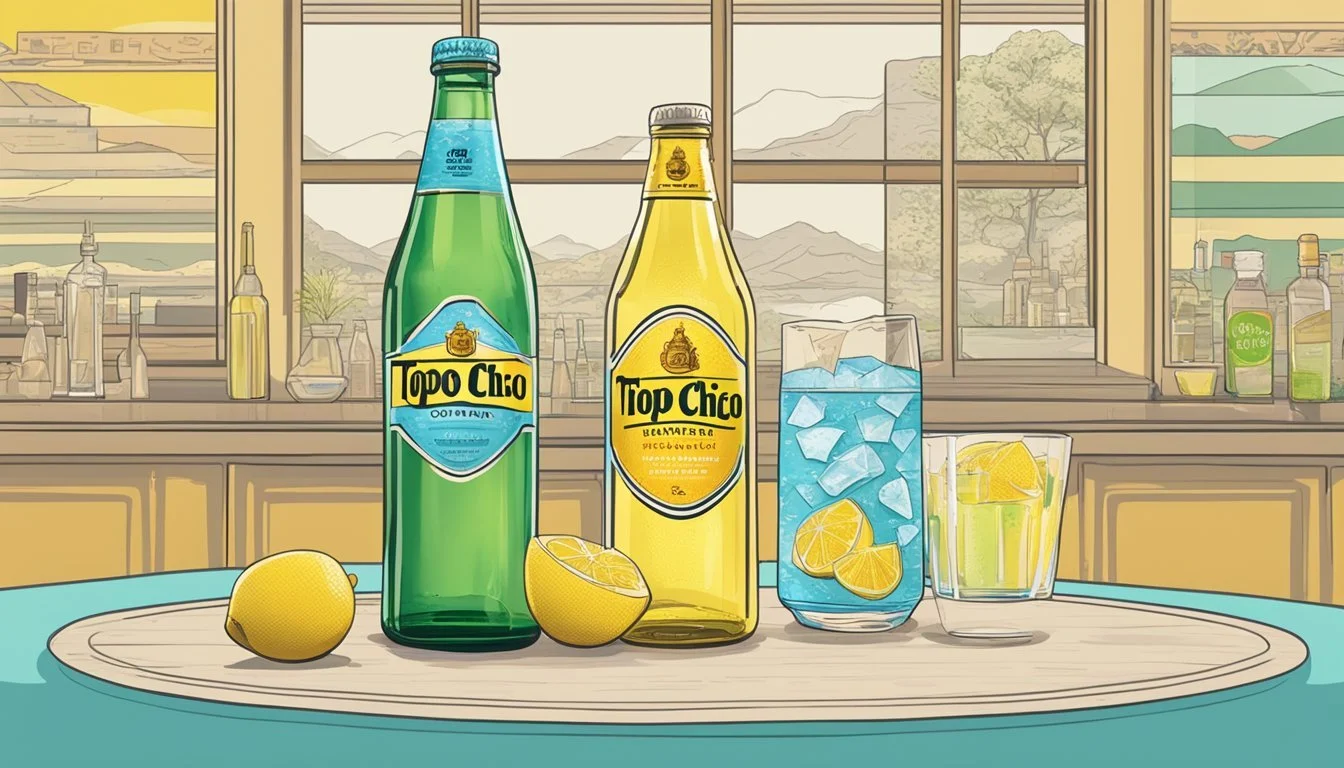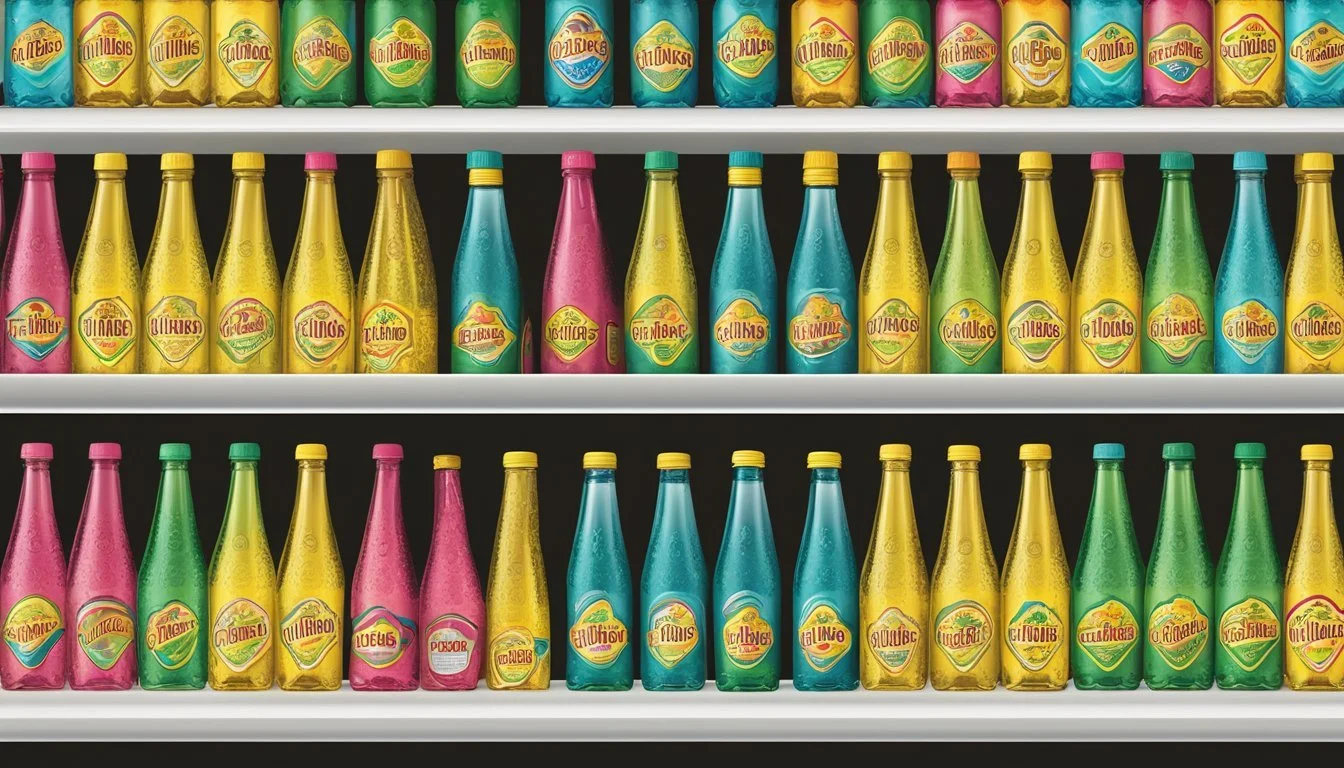Topo Chico vs. Crystal Lake
Comparing Quality and Taste
When it comes to choosing the best bottled water, Topo Chico and Crystal Lake often come up in conversations. If you're looking for intense carbonation and a satisfying crispness, Topo Chico stands out with its unique mineral content from Monterrey, Mexico. On the other hand, Crystal Lake offers a refreshing purity that has gained its own loyal followers.
Consumers new to Topo Chico might appreciate its mineral-rich taste and the powerful effervescence that sets it apart from other sparkling waters. Crystal Lake, in contrast, prides itself on delivering clean, still water that many people rely on for its consistent quality and smooth taste.
Each brand presents its own unique attributes and benefits. While Topo Chico's vibrant carbonation makes it a favorite for sparkling water enthusiasts, Crystal Lake's commitment to purity provides reassurance for those seeking a straightforward hydration option.
History and Origins
Both Topo Chico and Crystal Lake water brands have storied origins, reflecting their respective histories and the regions they come from.
The Legacy of Topo Chico
Topo Chico originates from Monterrey, Mexico, dating back to 1895. Discovered by the Garza family, the water comes from a natural spring near the base of the Cerro del Topo Chico.
Bottled initially for its reputed health benefits, Topo Chico gained popularity through the turbulent times of the Mexican Civil War. The spring's mineral-rich water was a sought-after commodity. Topo Chico's enduring appeal lies in its natural effervescence and the long-standing tradition of sourcing from the original spring, maintaining a consistent mineral content.
The Story Behind Crystal Lake
Crystal Lake water comes from Texas and has established itself as a prominent name in the bottled water market. Unlike Topo Chico’s naturally carbonated water, Crystal Lake offers pristine, still water sourced from deep underground wells.
The brand emphasizes purity and rigorous quality control. Texas's geological features contribute to the unique composition of Crystal Lake's water, appealing to consumers who prefer a clean, refreshing taste without carbonation. Its adoption in various regions testifies to its standing as a reliable choice for natural, still water.
Physical and Chemical Properties
When comparing Topo Chico and Crystal Lake bottled waters, it is essential to evaluate their mineral content and carbonation properties. These factors significantly influence taste, health benefits, and overall consumer preferences.
Mineral Content Analysis
Topo Chico is sourced from the springs at the foot of Cerro del Topo Chico in Northern Mexico. This mineral water is rich in calcium, magnesium, and sodium, contributing to its distinct taste and potential health benefits. Crystal Lake's mineral content, while generally lower, still offers essential minerals such as potassium and calcium, albeit in different concentrations.
Topo Chico:
Calcium: Important for bone health.
Magnesium: Supports muscle function.
Sodium: Enhances flavor profile.
Crystal Lake:
Potassium: Balances electrolytes.
Calcium: Maintains strong bones.
Both waters offer unique mineral compositions that cater to different nutritional needs and taste preferences.
Carbonation and Effervescence
Carbonation levels in sparkling waters are crucial for the drinking experience. Topo Chico is well-known for its strong, long-lasting effervescence thanks to its precise carbonation process. This carbonation enhances the crisp, refreshing feeling associated with Topo Chico.
Crystal Lake, while also carbonated, tends to have a gentler fizz. This softer carbonation might appeal to those who prefer a milder sparkle in their sparkling water.
In summary, Topo Chico provides a more robust and enduring carbonation, making it a favorite for those who enjoy a vigorous burst of bubbles. Meanwhile, Crystal Lake's gentle effervescence offers a more subdued, yet equally refreshing experience. Both brands deliver unique carbonation experiences catering to varied consumer preferences.
Health and Safety Considerations
Understanding the health benefits and potential contaminants in bottled water is crucial. Topo Chico and Crystal Lake have key differences in their hydration properties and purity levels.
Hydration and Health Benefits
Topo Chico is renowned for its naturally carbonated mineral water. The minerals in Topo Chico, such as calcium and magnesium, support bone health and digestion. Regular hydration from mineral water can enhance overall well-being.
Crystal Lake boasts a reputation for purity. Free from carbonation, it provides straightforward hydration without the mineral boost. Its simplicity appeals to those who prefer plain water without added minerals. Both brands offer essential hydration, but their added nutritional benefits differ.
PFAS and Contaminants
Concerns over PFAS chemicals have put Topo Chico under scrutiny. PFAS, or per- and polyfluoroalkyl substances, are linked to health issues like cancer. Recent tests by Consumer Reports found Topo Chico cut PFAS levels by more than half. Nonetheless, it still exceeds the level some experts recommend.
Crystal Lake, on the other hand, aligns with safer PFAS levels under one part per trillion (ppt). The EPA and FDA provide guidelines for PFAS in drinking water, but these aren't yet enforceable federal limits. It's crucial to consider these contaminant levels when choosing between the two brands.
Taste and Culinary Uses
Topo Chico and Crystal Lake each offer unique flavor profiles and culinary possibilities, making them suitable for different preferences and uses in beverages and dishes.
The Flavor Profile of Topo Chico
Topo Chico is renowned for its crisp and refreshing taste. The mineral composition adds a slight salty and metallic tang, which many find invigorating.
One of its key flavor attributes is its effervescence; the water is intensely carbonated, which enhances its refreshing quality. When consumed plain, it offers a clean, almost citrus-like finish, although no actual citrus is added.
This makes it a favorite in cocktails, especially Mexican-themed drinks like Ranch Water and Palomas, where Topo Chico’s sharp bubbles complement lime and grapefruit notes.
Its neutral yet exciting flavor also means it pairs well with a simple twist of lime.
Culinary Applications for Crystal Lake
Crystal Lake water, often described as having a clean and pure taste, lacks the intense carbonation found in Topo Chico. This makes it versatile for both drinking and culinary uses.
In the kitchen, its mild taste ensures it does not overpower ingredients, making it ideal for cooking. It can be used in everything from soups to rice, where the quality of water can subtly influence the dish's flavor.
For beverages, Crystal Lake serves as an excellent base for infusions and non-alcoholic drinks. Its soft profile allows the flavors of citrus, herbs, and fruits to shine through without competing against the water itself.
It can be a hydrating option for combatting a hangover, providing purity and refreshment.
Environmental and Production Factors
Comparing Topo Chico and Crystal Lake involves evaluating their environmental footprint and production practices. These factors include the materials used for bottling and packaging, as well as the source and purification methods of their water.
Bottling and Packaging
Topo Chico and Crystal Lake utilize different materials for their bottles, affecting their environmental impact. Topo Chico often uses glass bottles, which, while heavier and requiring more energy to transport, are 100% recyclable and do not leach chemicals. Crystal Lake uses aluminum cans or PET plastics, which are lighter but can be less environmentally friendly due to lower recycling rates and potential chemical leaching.
Additionally, the packaging processes for both brands must consider energy consumption and emissions during production. Glass bottles are more energy-intensive to produce but tend to have a longer lifecycle compared to aluminum or plastic containers. Monitoring and improving these processes is critical for reducing the environmental footprint of both brands.
Water Source and Purification
The water source plays a significant role in the environmental impact of bottled water. Topo Chico sources its water from a spring in Monterrey, Mexico. This spring water undergoes minimal treatment, maintaining its natural minerals. The Environmental Protection Agency (EPA) guidelines ensure that the water meets safety standards without extensive purification processes.
Crystal Lake, on the other hand, might source its water from various locations, potentially requiring more rigorous purification processes to meet EPA safety standards. These processes can involve filtration, ultraviolet light, or reverse osmosis, which increase energy use and environmental impact.
Both brands need to ensure that their water sources are sustainable and that their purification processes do not excessively deplete or damage natural resources. Balancing purity, safety, and environmental responsibility is crucial for both Topo Chico and Crystal Lake.
Consumer Insights and Market Trends
In the ever-growing market of bottled water, new insights reveal shifting consumer preferences and significant trends. Popular brands like Topo Chico and Crystal Lake see varying sales and competition, influenced by health concerns and luxury positioning.
Bottled Water Popularity and Sales
According to the International Bottled Water Association, the U.S. bottled water market continues to expand, with sales reaching approximately 15.9 billion gallons in 2022. This growth highlights a marked preference for bottled water as a daily beverage choice.
Consumer Reports shows increasing concerns about the presence of PFAS chemicals in bottled water. Coca-Cola has responded by reducing PFAS levels in Topo Chico, which could impact consumer preference towards Topo Chico positively.
Comparison with Competitor Brands
Brands like LaCroix, Perrier, San Pellegrino, Schweppes, Spindrift, and Bubly dominate sparkling water segments in the market. Recent statistics reveal Perrier leading in U.S. convenience store sales, as detailed by Statista.
Topo Chico's effort in reducing harmful chemicals positions it advantageously against competitors within this category. Crystal Lake, comparatively less discussed, might need to address similar health concerns or leverage unique selling propositions to stand out. Brands available on platforms like Amazon see varied success based on these attributes.
These factors, from chemical content to brand positioning, significantly shape consumer choices and market dynamics in the bottled water sector.
Regulation and Standards
Regulation and standards for bottled water involve compliance with guidelines set by federal and industry organizations to ensure public health. Key entities include the FDA and IBWA, focusing on contaminant limits such as PFAS and lead.
FDA and IBWA Guidelines
The Food and Drug Administration (FDA) regulates bottled water as a food product, ensuring it meets safety standards. The FDA mandates that bottled water manufacturers adhere to stringent labeling and quality control protocols.
The International Bottled Water Association (IBWA), a trade organization, imposes additional requirements beyond those mandated by the FDA. Membership with the IBWA necessitates adherence to their Model Code, which includes annual inspections by an independent third party.
Combining these guidelines ensures that products like Topo Chico Mineral Water meet or exceed regulatory expectations, enhancing consumer trust.
Lead and Contaminant Limits
Lead and other contaminants pose significant health risks. The FDA establishes strict limits, and for lead, the federal limit is set at 5 parts per billion (ppb). Compliance with these standards is crucial for preventing health issues related to lead exposure.
Besides lead, attention is focused on reducing "forever chemicals" like PFAS. The emphasis on contaminants is driven by public health concerns, necessitating regular testing and reduction strategies. Topo Chico has made efforts to reduce PFAS levels significantly, highlighting the importance of ongoing compliance and improvement.
Brand Presence and Consumer Loyalty
The impact of effective marketing strategies and brand recognition is critical in the bottled water industry. Topo Chico and Crystal Lake have different approaches that influence their consumer loyalty and presence in the market.
Marketing Strategies of Topo Chico
Topo Chico has leveraged innovative marketing strategies to become a premium choice in the bottled water market. Owned by Coca-Cola, the brand employs a blend of digital marketing, influencer partnerships, and unique labeling to connect with consumers.
Its association with its Monterrey, Mexico origin, and the Cerro del Topo Chico spring has been a focal point in distinguishing its product. The use of social media and trendy marketing campaigns has created a loyal consumer base. This approach ensures that Topo Chico continuously stays in touch with current market trends and consumer preferences.
Brand Recognition of Crystal Lake
Crystal Lake's brand recognition is strong owing to its consistent quality and marketing presence. The brand benefits from an image of purity and reliability, often highlighted in its advertising campaigns.
State and national water quality certifications, coupled with endorsements from organizations like the International Bottled Water Association, help maintain consumer trust. Unlike Topo Chico, which focuses on a premium and trendy image, Crystal Lake emphasizes the cleanness and safety of its bottled water, appealing to a broad demographic that values health and reliability.
In summary, Topo Chico's innovative and trendy marketing aligns it with a niche, trend-savvy market, whereas Crystal Lake emphasizes consistent quality and reliability to appeal to health-conscious consumers.
More About Topo Chico
Core Hydration vs Topo Chico: Which Bottled Water is Better?
Icelandic Glacial vs Topo Chico: Which Bottled Water is Better?
Mountain Valley Spring Water vs Topo Chico: Which Bottled Water is Better?
Nestle Pure Life vs Topo Chico: Which Bottled Water is Better?
San Pellegrino vs Topo Chico: Which Bottled Water is Better?
Topo Chico vs Aqua Carpatica: Which Bottled Water is Better?
Topo Chico vs Cascade Mountain: Which Bottled Water is Better?
Topo Chico vs Crystal Geyser: Which Bottled Water is Better?
Topo Chico vs Hawaii Volcanic: Which Bottled Water is Better?
Topo Chico vs Hawaiian Springs: Which Bottled Water is Better?
Topo Chico vs Kirkland Signature: Which Bottled Water is Better?
Topo Chico vs Richard's Rainwater: Which Bottled Water is Better?
Topo Chico vs Solan de Cabras: Which Bottled Water is Better?
Topo Chico vs Talking Rain AQA: Which Bottled Water is Better?
Topo Chico vs Whole Foods 365: Which Bottled Water is Better?
Topo Chico vs Whole Foods Italian Still Mineral water: Which Bottled Water is Better?
More About Crystal Lake
Aqua Carpatica vs Crystal Lake: Which Bottled Water is Better?
Cascade Mountain vs Crystal Lake: Which Bottled Water is Better?
Core Hydration vs Crystal Lake: Which Bottled Water is Better?
Crystal Geyser vs Crystal Lake: Which Bottled Water is Better?
Crystal Lake vs Essence pH10: Which Bottled Water is Better?
Crystal Lake vs Proud Source: Which Bottled Water is Better?
Hawaii Volcanic vs Crystal Lake: Which Bottled Water is Better?
Hawaiian Springs vs Crystal Lake: Which Bottled Water is Better?
Ice Mountain vs Crystal Lake: Which Bottled Water is Better?
Icelandic Glacial vs Crystal Lake: Which Bottled Water is Better?
Kirkland Signature vs Crystal Lake: Which Bottled Water is Better?
Liquid Death vs Crystal Lake: Which Bottled Water is Better?
Mountain Valley Spring Water vs Crystal Lake: Which Bottled Water is Better?
Nestle Pure Life vs Crystal Lake: Which Bottled Water is Better?
Poland Spring vs Crystal Lake: Which Bottled Water is Better?
Purely Sedona vs Crystal Lake: Which Bottled Water is Better?
Richard's Rainwater vs Crystal Lake: Which Bottled Water is Better?
San Pellegrino vs Crystal Lake: Which Bottled Water is Better?
Simple Truth vs Crystal Lake: Which Bottled Water is Better?
Solan de Cabras vs Crystal Lake: Which Bottled Water is Better?
Talking Rain AQA vs Crystal Lake: Which Bottled Water is Better?
Whole Foods 365 vs Crystal Lake: Which Bottled Water is Better?
Whole Foods Italian Still Mineral water vs Crystal Lake: Which Bottled Water is Better?

